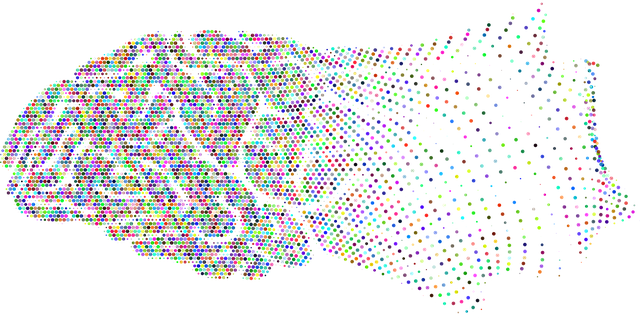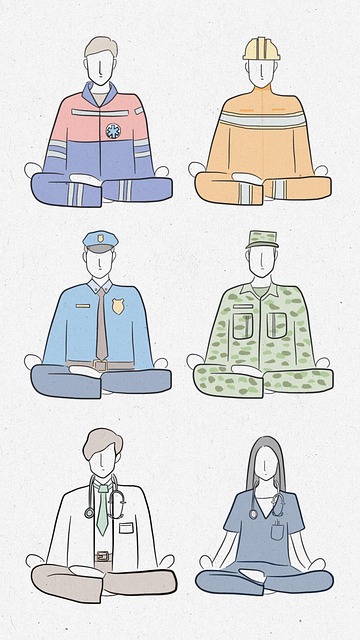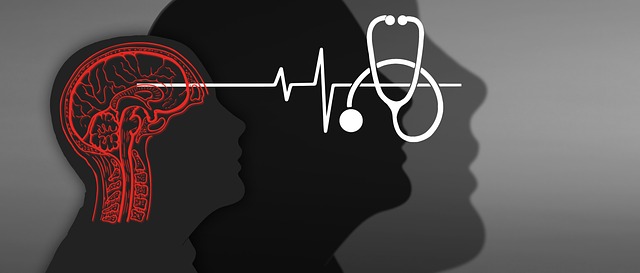Implementing effective Superior Major Life Transitions Therapy requires understanding diverse community needs through assessments, active listening, and public awareness campaigns. Tailored outreach programs, including mental wellness podcasts and coaching, reach marginalized groups, build trust, and foster empathy. Strategic partnerships with local organizations amplify impact, while culturally sensitive training empowers healthcare providers. Measuring success through evaluations, promoting resilience, and sustaining engagement ensures long-term benefits for holistic mental well-being across communities.
Community outreach programs play a pivotal role in delivering essential services, particularly for superior major life transitions therapy. This article guides you through the comprehensive process of implementing such initiatives. From understanding community needs and identifying target groups to designing effective strategies, building partnerships, and best practices for program delivery, each step is crucial. Additionally, we explore measuring success and sustainability, ensuring long-term benefits for diverse communities in need of superior major life transitions therapy.
- Understanding Community Needs: Identifying Target Groups for Superior Major Life Transitions Therapy
- Designing Effective Outreach Strategies: Techniques to Connect with Diverse Communities
- Building Partnerships: Collaborating with Local Organizations for Maximum Impact
- Implementing Programs: Best Practices for Delivering Therapeutic Services in Community Settings
- Measuring Success and Sustainability: Evaluating the Long-term Benefits of Community Outreach
Understanding Community Needs: Identifying Target Groups for Superior Major Life Transitions Therapy

Understanding Community Needs is a foundational step for effective implementation of Superior Major Life Transitions Therapy. By conducting thorough assessments and engaging in active listening, community outreach programs can identify specific target groups within diverse populations who are most in need of such therapeutic support. This includes individuals facing significant life changes, such as those experiencing poverty, displacement, or dealing with mental health challenges. Public Awareness Campaigns Development and Compassion Cultivation Practices play a pivotal role here, ensuring that these groups are not only reached but also understood within their unique contexts.
Through the strategic deployment of Mental Wellness Podcast Series Production, community outreach programs can provide accessible, tailored content addressing common issues faced by these target groups. This multimedia approach enhances public awareness, fosters empathy, and encourages open conversations about mental wellness. Ultimately, recognizing and catering to distinct community needs ensures that Superior Major Life Transitions Therapy is not only comprehensive but also culturally sensitive and relevant, maximizing its positive impact on the lives it touches.
Designing Effective Outreach Strategies: Techniques to Connect with Diverse Communities

Designing effective outreach strategies requires a deep understanding and appreciation for cultural sensitivity in mental healthcare practice. By tailoring approaches to align with diverse communities’ unique needs, preferences, and values, organizations can foster trust and encourage participation. This involves learning about different cultural backgrounds, beliefs, and practices related to mental health and well-being. Incorporating methods that resonate with each community, such as traditional healing practices or community gatherings, can significantly enhance engagement.
Moreover, inner strength development is a critical component of successful outreach. Programs should empower individuals by teaching resilience, coping mechanisms, and self-care techniques tailored to various life transitions. For instance, reaching out to marginalized groups during significant mental health crises or major life transitions like migration or loss can make a profound difference. By combining mental health awareness campaigns with culturally responsive practices, community outreach programs can effectively address barriers to care and promote holistic well-being.
Building Partnerships: Collaborating with Local Organizations for Maximum Impact

Building strong partnerships with local organizations is key to enhancing the impact of community outreach programs, especially when focusing on Superior Major Life Transitions Therapy (SMLTT). By collaborating with existing entities such as schools, churches, and community centers, mental health services can reach a broader audience. These partnerships allow for shared resources, expertise, and networks, which are vital for addressing the complex needs of individuals facing significant life changes or mental illness.
For instance, Mental Wellness Coaching Programs Development can benefit greatly from school partnerships to offer workshops on conflict resolution techniques tailored to students’ needs. Similarly, engaging with community leaders in mental illness stigma reduction efforts can foster a more inclusive environment. Such collaborations ensure that SMLTT initiatives are culturally sensitive and relevant, ultimately improving the accessibility and effectiveness of mental health support within the community.
Implementing Programs: Best Practices for Delivering Therapeutic Services in Community Settings

Implementing community outreach programs for therapeutic services requires a strategic approach to effectively address mental health needs. When designing these initiatives, it’s essential to consider the unique challenges and resources within each community. One key best practice is tailoring programs to cater to specific populations, such as youth, seniors, or ethnic minorities, ensuring relevant cultural competency among healthcare providers. This involves training sessions that equip professionals with empathy-building strategies for different contexts.
For sustainable impact, these outreach programs should focus on more than just addressing immediate concerns; they must also aim to prevent issues like depression and promote superior mental well-being over major life transitions. Incorporating evidence-based practices and community engagement can lead to positive outcomes, fostering a supportive environment that enhances overall community resilience.
Measuring Success and Sustainability: Evaluating the Long-term Benefits of Community Outreach

Measuring success and sustainability is a vital component of any community outreach program. To assess the long-term benefits, it’s essential to implement robust evaluation methods that go beyond immediate outcomes. This includes tracking improvements in mental health literacy, increased access to therapy services, and enhanced coping mechanisms within the community. By integrating Mind Over Matter principles and prioritizing Cultural Sensitivity in Mental Healthcare Practice, outreach programs can foster a sense of belonging and empowerment among participants.
Regular follow-up sessions, self-awareness exercises, and community support networks can help sustain these positive changes. The impact of such initiatives extends beyond individual well-being; they contribute to building resilient communities where individuals navigate Major Life Transitions with greater ease. This holistic approach ensures that the outreach program’s benefits reverberate through various aspects of participants’ lives, creating a lasting difference in their mental health and overall quality of life.
Community outreach programs focused on providing Superior Major Life Transitions Therapy can significantly impact individuals’ well-being and community resilience. By understanding diverse community needs, designing tailored strategies, building partnerships, and implementing best practices, organizations can offer accessible and impactful therapeutic services. Measuring success through long-term evaluations ensures the sustainability of these initiatives, fostering healthier and more connected communities.














